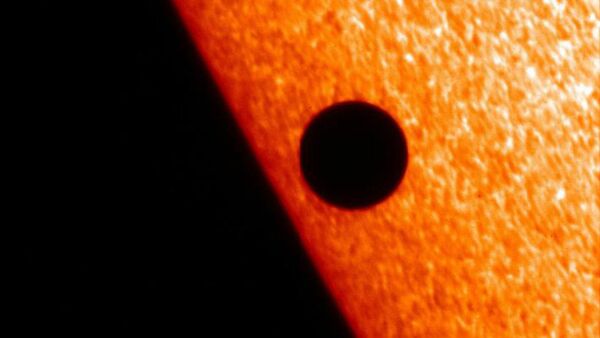The most interesting part of a transit for many astronomers is the black drop effect, an optical illusion that happens when Mercury either just enters or starts to leave the sun's disk.
The transit will begin at 7:12 am EDT (2:12 pm Moscow Time) on Monday.
The black silhouette of the planet will take about seven and a half hours to make its trek across the solar disk.
Don't worry if you miss this transit of Mercury — you will get another chance in 2019. But after that, we won't see another event of this kind until 2032.
Transits of Mercury have long helped astronomers since viewing the event for the first time in 1631.
In 1631 Pierre Gassendi, a French philosopher, consulted Johannes Kepler's Rudolphine Tables, which four years earlier had predicted when Mercury would cross the sun's surface.
Scientists can now predict such "transits" hundreds of years in advance.
Gear checked out for tomorrow's Mercury Transit. No holes in filter, finderscope covered in advance… Bring it On! pic.twitter.com/t0jAKvonMt
— mars_stu (@mars_stu) 8 May 2016
Back in those days telescopes were new and transit-spotting was the preserve of the learned few. Now stargazing is for everyone.
Here 'tis; an updated map of #ISS solar transits via CALSky during tomorrow's #MercuryTransit for CONUS/Canada — pic.twitter.com/1lv3qAKUGF
— David Dickinson (@Astroguyz) 8 May 2016
On Monday the Slooh battery of robotic telescopes will release images of Mercury's voyage from three continents, and the space agencies (ESA and NASA) will be streaming the event on the internet as well.



